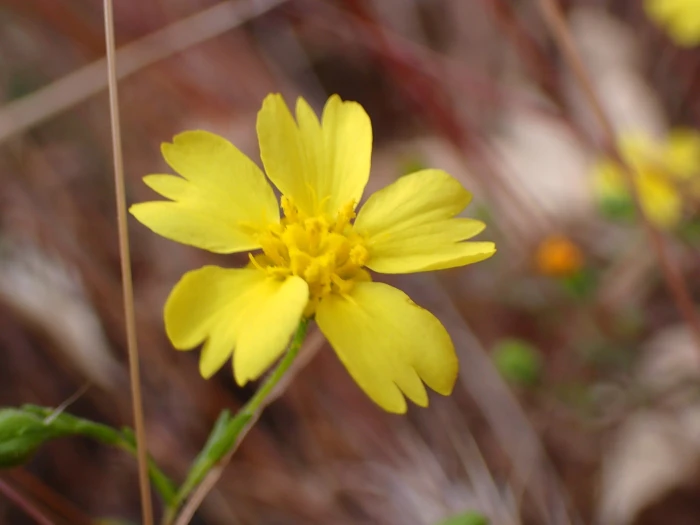Kellogg’s Spikeweed
(Deinandra kelloggii)
Kellogg’s Spikeweed (Deinandra kelloggii)
/
/

Cricket Raspet
CC BY 4.0
Image By:
Cricket Raspet
Recorded By:
Copyright:
CC BY 4.0
Copyright Notice:
Photo by: Cricket Raspet | License Type: CC BY 4.0 | License URL: http://creativecommons.org/licenses/by/4.0/ | Rights Holder: Cricket Raspet | Publisher: iNaturalist | Date Created: 2022-05-02T11:17:35-07:00 |

























Estimated Native Range
Climate Requirements for Takasaki, Japan
| This Plant | Your Site | Plant Suitability for Your Location | ||
|---|---|---|---|---|
| • Precipitation | 5" - 44" | 51" | Aquatic | Aquatic |
| • High Temp. | 69°F - 103°F | 88°F | Your summer temperatures are normal for this plant. | Excellent |
| • Low Temp. | 29°F - 45°F | 28°F | Your winter temperatures may be too cold for this plant | Too cold |
This plant may not grow well at your location - your precipitation is too high.
Summary
Deinandra kelloggii, commonly known as Kellogg’s spikeweed or Kellogg’s tarweed, is an annual herb native to the chaparral, coastal sage scrub, and grasslands of southern and central California, Baja California, and occasionally found in Pima County, Arizona. It can grow up to 5 feet tall and is characterized by its erect, glandular, and sticky stems. The plant produces numerous flower heads from late spring to early fall, each with 5 bright yellow ray florets and 6 disc florets featuring yellow, red, brown, or maroon anthers, which are quite showy and attract a variety of pollinators.
Kellogg’s spikeweed is appreciated for its vibrant yellow flowers and its ability to thrive in poor, dry soils, making it a suitable choice for wildflower meadows, restoration projects, and drought-tolerant gardens. It requires minimal maintenance once established and is best grown in full sun with well-drained soil. While not commonly used in formal garden settings, it can provide a naturalistic look and support local wildlife. Potential problems include susceptibility to rust and mildew in humid conditions. It is not known for being invasive outside its native range, but gardeners should be mindful of its self-seeding habit.CC BY-SA 4.0
Kellogg’s spikeweed is appreciated for its vibrant yellow flowers and its ability to thrive in poor, dry soils, making it a suitable choice for wildflower meadows, restoration projects, and drought-tolerant gardens. It requires minimal maintenance once established and is best grown in full sun with well-drained soil. While not commonly used in formal garden settings, it can provide a naturalistic look and support local wildlife. Potential problems include susceptibility to rust and mildew in humid conditions. It is not known for being invasive outside its native range, but gardeners should be mindful of its self-seeding habit.CC BY-SA 4.0
Plant Description
- Plant Type: Herb
- Height: 1-3 feet
- Width: 1-2 feet
- Growth Rate: Moderate
- Flower Color: Yellow
- Flowering Season: Spring, Summer
- Leaf Retention:
Growth Requirements
- Sun: Full Sun
- Water: Low
- Drainage: Medium, Fast
Common Uses
Bee Garden, Bird Garden, Butterfly Garden, Drought Tolerant, Low Maintenance
Natural Habitat
Native to chaparral, coastal sage scrub, and grasslands
Other Names
Common Names: Kellogg’s Spikeweed
Scientific Names: Deinandra kelloggii, Deinandra wrightii, Hemizonia kelloggii, Hemizonia wrightii, Hemizonia wrightii var. kelloggii, Hemizonia wrightii var. wrightii
GBIF Accepted Name: Deinandra kelloggii